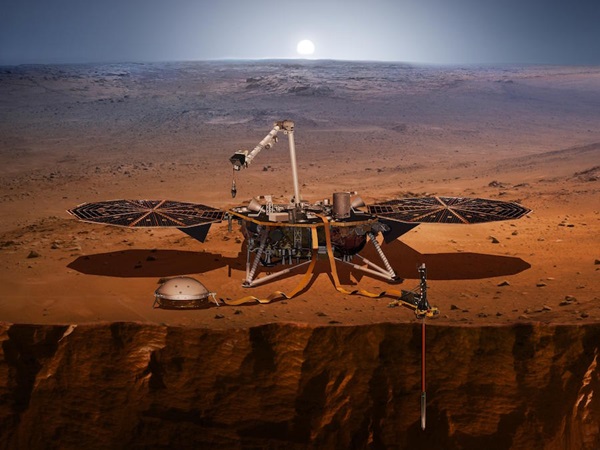NASA Is About to Launch the Next Mars Lander
Posted on Categories Discover Magazine

Disaster Averted
“This has been my dream for almost 30 years,” says Banerdt.
He was in graduate school in the 1970s when NASA’s Viking landers attempted to collect seismic data from Mars, and was even relying on that data to reveal the thickness of Mars’s crust. Unfortunately, Viking’s seismic results weren’t usable—the seismometer wasn’t placed on the surface of the planet, which rendered its data too noisy.
Since then, Banerdt put in more than a half dozen mission proposals, hoping to get new data for the scientific investigations that had been languishing since Viking. InSight was his dream project, but Banerdt’s dream almost didn’t come true.
In December 2015, InSight’s team discovered a tiny leak in the vacuum system associated with the seismometer, from a crack that was just nanometers across. “If you had that leak on your tire, it would take 50 years before you’d lose one psi on your tire,” Banerdt says. Unfortunately, it was enough to ruin the precision of the measurements the team planned to take, and ultimately, to force the mission to be delayed.
“It was a tough pill to swallow,” Banerdt says. He was concerned that NASA would tell him he’d had his chance and blown it. However, he and the team persisted, proposing what the fix would require, and showing they knew how to redesign the instrument effectively, “and that we wouldn’t leave them at the altar again.”
Ultimately, they convinced NASA that they had the problem in hand, and that the science was compelling enough to continue the mission. NASA went to Congress for special dispensation to increase the mission costs by $150 million.
Banerdt and the team took advantage of the extra design time. Instead of merely fixing the leak, they redesigned the vacuum system entirely. They also took the opportunity to reevaluate other parts of the lander, particularly those that had raised questions in other missions.
“By the time we get to 2018, we actually have a much stronger mission than we would have had in 2016,” Banerdt says.
All Systems Go
Every previous interplanetary mission has launched from the East Coast, which allows the rocket to get a speed boost from the Earth’s rotation while flying over water. An unexpected benefit of InSight’s delayed launch, however, is that the Atlas V, the smallest rocket NASA currently has available, has twice the capability of the rocket that InSight was originally designed for. This means the rocket won’t need help from the Earth’s rotation to lift InSight, Banerdt explains, and it opens up the possibility of launching from the West Coast instead.
This avoids a “traffic jam” of satellite launches, Banerdt says, but it also makes it possible for approximately 10 million people in a new region to view the launch in person. “Having hundreds of different videos [of the launch] on YouTube is going to be really cool,” he adds.
Assuming clear weather, InSight’s launch will be visible in person from Santa Maria, California, to San Diego, California. NASA provides information on both official viewing sites and informal viewing sites on a launch page. For those not on the West Coast, NASA will stream the launch online at NASA.gov/live, which will be mirrored directly below the day of the launch. Video of the launch will be available on demand later at YouTube.com/NASAJPL/live and Ustream.tv/NASAJPL.
The launch window for InSight begins at 4:05 a.m. PDT on May 5th and runs through June 8th. Those who witness the rocket’s progress through the sky in the early morning hours can decide whether to wave goodbye or hello. In either case, it will be a moment to watch.